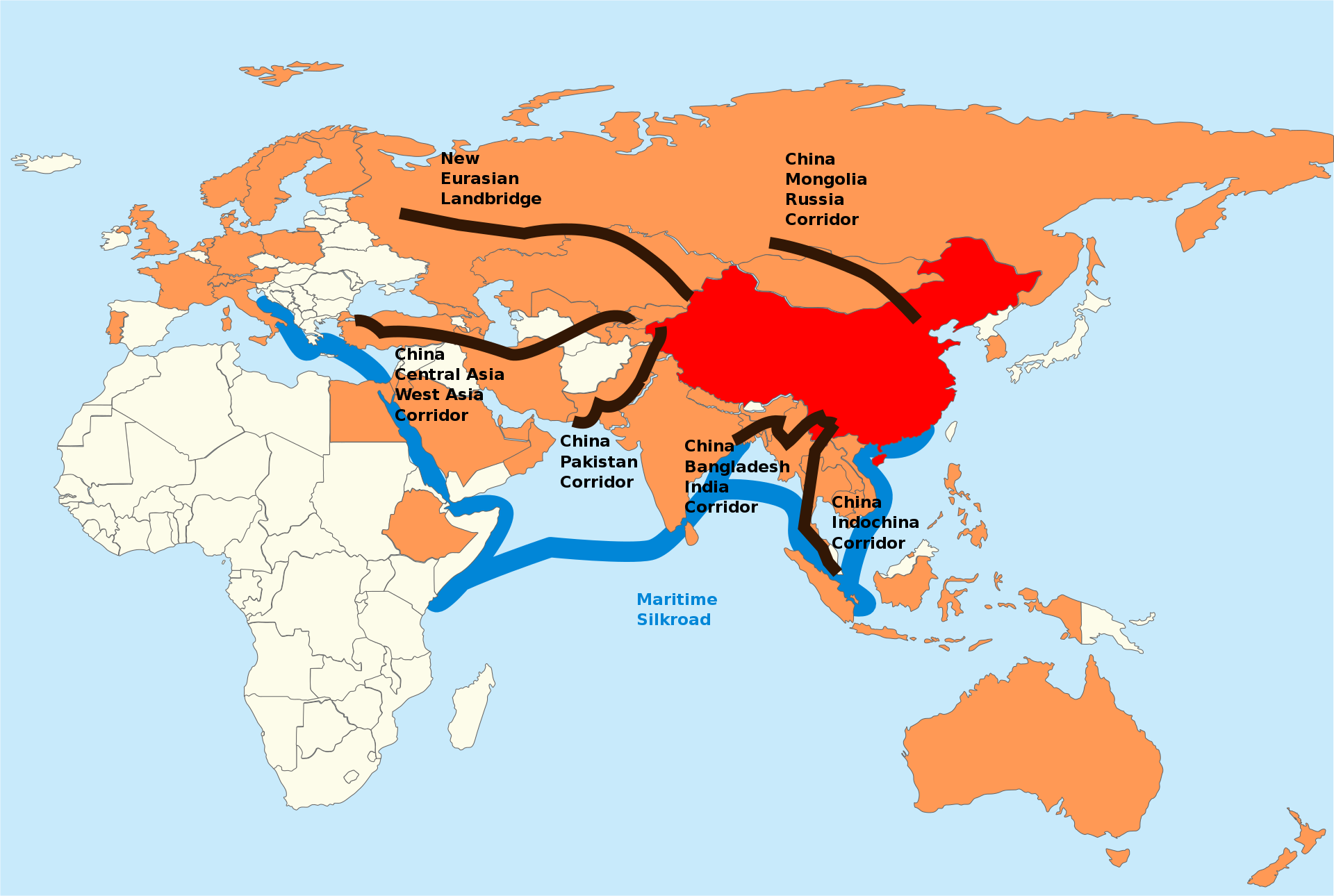More languages
More actions
Jucheguevara (talk | contribs) (added image and a few sentences) Tag: Visual edit |
Spookfessor (talk | contribs) mNo edit summary Tag: Visual edit |
||
| Line 1: | Line 1: | ||
[[File:One-belt-one-road.svg.png|alt=Map of Transportation routes in the Belt and Road Initiative|thumb|Transportation routes in the Belt and Road Initiative]] | [[File:One-belt-one-road.svg.png|alt=Map of Transportation routes in the Belt and Road Initiative|thumb|Transportation routes in the Belt and Road Initiative]] | ||
The '''Belt and Road Initiative''' ('''BRI''', or '''B&R'''), known in Chinese and formerly in English as '''One Belt One Road''' or '''OBOR''' for short, is a global infrastructure development strategy adopted by the Chinese government in 2013 to invest in nearly 70 countries and international organizations. It is considered a centerpiece of [[ | The '''Belt and Road Initiative''' ('''BRI''', or '''B&R'''), known in Chinese and formerly in English as '''One Belt One Road''' or '''OBOR''' for short, is a global infrastructure development strategy adopted by the [[China#Governance|Chinese government]] in 2013 to invest in nearly 70 countries and international organizations. It is considered a centerpiece of [[Communist Party of China]] general secretary and paramount leader [[Xi Jinping]]'s [[Foreign policy of Xi Jinping|foreign policy]].<ref>{{Cite news|title=President Xi proposes Silk Road economic belt|url=https://www.chinadaily.com.cn/china/2013xivisitcenterasia/2013-09/07/content_16951811.htm|work=China Daily|agency=Xinhua News Agency|location=Astana|date=7 September 2013|archive-url=https://web.archive.org/web/20200309024641/https://www.chinadaily.com.cn/china/2013xivisitcenterasia/2013-09/07/content_16951811.htm|archive-date=9 March 2020|url-status=live}}</ref><ref>{{Cite web|title=President Xi Jinping Delivers Important Speech and Proposes to Build a Silk Road Economic Belt with Central Asian Countries|url=https://www.fmprc.gov.cn/mfa_eng/topics_665678/xjpfwzysiesgjtfhshzzfh_665686/t1076334.shtml|archive-url=https://web.archive.org/web/20201017031834/https://www.fmprc.gov.cn/mfa_eng/topics_665678/xjpfwzysiesgjtfhshzzfh_665686/t1076334.shtml|archive-date=17 October 2020|url-status=live|date=7 September 2013|website=Ministry of Foreign Affairs of the People's Republic of China}}</ref> | ||
The BRI is one of the many factors which is leading to [[de-dollarization]], the transition away from the dependence on the US dollar as a global reserve asset and means of exchange.<ref>https://moderndiplomacy.eu/2018/04/09/the-de-dollarization-in-china/</ref> | The BRI is one of the many factors which is leading to [[de-dollarization]], the transition away from the dependence on the US dollar as a global reserve asset and means of exchange.<ref>https://moderndiplomacy.eu/2018/04/09/the-de-dollarization-in-china/</ref> | ||
Revision as of 08:21, 1 June 2021

The Belt and Road Initiative (BRI, or B&R), known in Chinese and formerly in English as One Belt One Road or OBOR for short, is a global infrastructure development strategy adopted by the Chinese government in 2013 to invest in nearly 70 countries and international organizations. It is considered a centerpiece of Communist Party of China general secretary and paramount leader Xi Jinping's foreign policy.[1][2]
The BRI is one of the many factors which is leading to de-dollarization, the transition away from the dependence on the US dollar as a global reserve asset and means of exchange.[3]
The project has a target completion date of 2049.[4]
